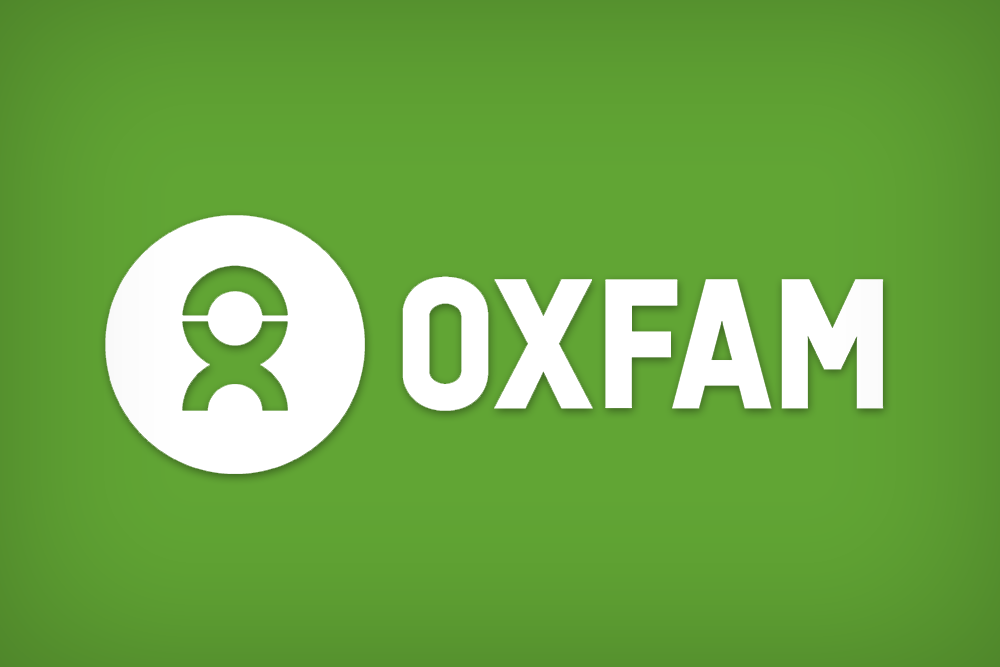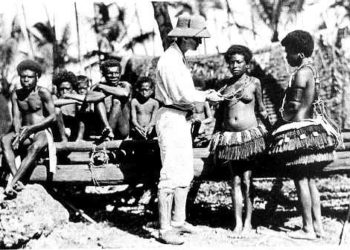 Although the focus of The Scholarly Kitchen is mostly on scholarly communications, it can also be helpful to look outside of our industry at the sorts of research being done elsewhere – and how it is being communicated. A great example of some very important research that recently made headlines around the world is Oxfam’s recent ‘Wealth: Having it all and Wanting More’ report, which showed that world’s richest 80 individuals collectively own as much wealth as the poorest 3.5 billion. At a time when measuring the impact of research is increasingly critical to academic success, there’s much we can all learn from how Oxfam conducted this research and how they maximized its impact. Deborah Hardoon, Senior Researcher at Oxfam, kindly agreed to talk to me about her experience of working on the team responsible for conducting this important research.
Although the focus of The Scholarly Kitchen is mostly on scholarly communications, it can also be helpful to look outside of our industry at the sorts of research being done elsewhere – and how it is being communicated. A great example of some very important research that recently made headlines around the world is Oxfam’s recent ‘Wealth: Having it all and Wanting More’ report, which showed that world’s richest 80 individuals collectively own as much wealth as the poorest 3.5 billion. At a time when measuring the impact of research is increasingly critical to academic success, there’s much we can all learn from how Oxfam conducted this research and how they maximized its impact. Deborah Hardoon, Senior Researcher at Oxfam, kindly agreed to talk to me about her experience of working on the team responsible for conducting this important research.
Please tell us a bit about yourself Deborah. What is your background and what took you to Oxfam?
I have been with Oxfam since October 2013, working in the Global Research team, based in Oxfam House. It’s been a fascinating year and a half. My first project was producing an Index on global food consumption and nutrition, I spent some time in the South Africa office on a case study on their “Raising Her Voice Programme”, and more recently I have been working a lot on data and analysis on inequality, with a particular interest in political capture.
Previous to this role, I worked as a Research Manager for Transparency International, an anti-corruption NGO with its secretariat in Berlin, where I was responsible among other things for putting together their flagship Index, the Corruption Perceptions Index. Before that I worked for the Government of Lesotho, in the Ministry of Finance, as an economic advisor on the national development plan and the capital budget, during which time I gave some pretty frank advice on some pretty big white elephants. I have an undergraduate degree in Economics and Business from the University of Newcastle upon Tyne in the UK and a Masters in Economics from the University of British Columbia in Canada.
So I am an economist with a keen interest in putting the politics into the economics, who gets really angry when I see unfairness and injustice, particularly when it is perpetrated by people in positions of power and responsibility. Being a researcher at Oxfam gives me a great opportunity to use my skills and experience to generate research on these critical issues.
What role does research play in a large non-governmental organization like Oxfam?
Oxfam works all over the world to fight poverty and injustice through its programming, campaigns, and humanitarian work. Throughout our portfolio of work, research is being conducted, so that evidence underpins what we do and what we advocate for. Good research on the issues that we work on helps us to improve the quality of our programming, provide substance for our campaigning, and ensure that we have credibility and legitimacy in whatever we do. We also have a small dedicated research team, of which I am a part. We produce our own research on relevant issues, exploring concepts and ideas and providing thought leadership on issues that are related to, but often not directly associated with, the direct objectives of our programmatic and campaigning work. We also provide research support to the rest of the organization.
What was the background to this particular piece of research? Why and how did you focus on this area?
Over the past couple of years, it was becoming increasingly clear to us at Oxfam that, in order to work effectively to reduce poverty and fight injustice, we needed not just to look at absolute poverty and those at the very bottom, but also to understand the whole economic distribution – how income, wealth, and power is increasingly concentrated at the very top, and how the politics and economics of high and rising inequality keeps people at the bottom of the distribution poor and powerless. As such, Oxfam have embarked on a long term inequality campaign, “Even it Up“, to fight extreme and rising levels of inequality. But it has been critical to establish an evidence base behind this work.
Last year Ricardo Fuentes-Nieva, Head of Research and Nick Galasso, Researcher at Oxfam America produced the research report “Working for the Few“. The report was a great analysis of the relationship between economic inequality and political influence, using lots of examples and case studies of how the rich are also politically powerful. Ricardo and Nick identified a couple of data sources that gave them information as to how wealth was distributed globally, which helped them identify and illustrate the extent of the problem. They made headline news with the stark fact that the richest 85 individuals in the world collectively owned the same amount of wealth as the poorest 3.5billion people. This was just before Davos in January 2014, and the impact of this powerful statistic was huge. The report really launched Oxfam into the global conversation on inequality, and it also provided an important narrative on the relationship between economic and political inequality – why economic inequality is not just a problem in and of itself, with respect to the distribution of income and wealth, but it also distorts policy making.
Having articulated the extent of inequality in 2014, this year we wanted to know whether it was getting better or worse; what were the trends over time? We didn’t know what the answer would be; we were looking to see what the data would tell us. When I ran the numbers, the results were clear: wealth has become even more concentrated in the last few years. Today, just 80 billionaires have the same wealth as the poorest half of the world’s population. The fact that the top 1% owns 48% of global wealth was startling enough, but some of the other data also revealed powerful results on the distribution of wealth. For example, when you look at the trend over the last four years and start to imagine what the world would look like if this trend continued, it wouldn’t take long – just one more year in fact – before the top 1% own more than half of the world’s wealth.
The rest of the report sought to develop our understanding and provide evidence of how wealth can be used to influence policies, as described in case studies in the previous paper. It therefore explored who exactly is at the top of the distribution, the sectors from which billionaires have made their massive wealth, and how much companies from these sectors spend on lobbying.
What was the impact of the research when it was published in the “Wealth: Having it all and Wanting More“ report?
In media terms, it was a huge global sensation. The report and its findings made headlines all over the world. But it wasn’t just about press release pick up on the day of launch. The launch took place the day before for economic and political elite met at Davos, and the media attention on the report helped put inequality front and center of the agenda at Davos, making it an issue that no one there could ignore. The report prompted an active debate on the statistics and calculations, which gave us a great opportunity to keep it in the headlines by giving sound and robust replies to challenges, strengthening our message further. Outside of Oxfam, Branko Milanovic, the Financial Times, and the New Yorker all published articles in support of our analysis and findings, and we used our own response channels (such as the Mind the Gap blog, and a letter in the Economist) to back our findings up further. The data continues to be referenced all over the world as evidence of extreme inequality – even Obama has used the ’80 stat’ in a speech this year. It strengthened Oxfam’s position as a sound and credible voice to speak out on inequality, particularly as it affects the poorest people.
Many researchers’ eyes would water at the kind of media coverage your research on inequality has got. How did you achieve that?
Much of the work had already been done for me; I was not starting from a blank piece of paper. Oxfam had established itself as a credible voice on inequality with ‘Working for the Few’, so the media trusted what we had to say, which in turn makes access to mainstream news much easier. Of course, we had to make sure that this piece of research upheld the same robust research quality standard for which we are known. And at Oxfam, we also deliberately make our research accessible. We aren’t trying to impress, confound, or confuse with our research, rather to present data and analysis that can easily be understood. It is particularly powerful when it can be summarized in a headline result – in a so-called ‘killer fact’ or chart which can easily be reproduced and shared, particularly on social media. We aim to produce research that can be discussed in the pub, as well as stand up to rigorous scrutiny, for example, in a university setting.
Ultimately we were presenting evidence on an issue that increasingly resonates with many people. Material inequality is increasingly evident to all of us in our own lives, so we are talking about a really important issue at exactly the right time.
Could you tell us a bit more about how, as a researcher, you worked with others, such as Oxfam’s media unit and communications teams, to increase the impact of your research?
The media team helped us ensure that what we were writing was powerful and accessible, and not just technocratic. Professional help in looking for a story is a very helpful steer if you want journalists to take note of what you are writing about. The publications team helped generate – in record time – a well formatted, well edited, easy-to-read publication.
The media and campaigns team helped set up the ‘hook’. Winnie, the head of Oxfam International was attending Davos, which provided the perfect setting – getting the context and timing right to generate the sort of splash we saw was crucial to the media success. The media lead was also responsible for selecting the most powerful aspects of the research for the press release and, of course, they have the contacts and know-how to get this press release out to as many people as possible, ahead of time. When the coverage and interest and coverage started to flow in, they had a team of spokespeople prepared, mostly from the campaigns team, who used the opportunity to promote more of Oxfam’s messages and ongoing work on inequality and ensured that the space that this report created for talking about this issue was maximized.
Do you have any tips for others working in scholarly communications, particularly in the social sciences, on how best to increase the impact of their work among policy-makers?
Clearly Oxfam’s expertise in working with the press and having a very public voice through our public campaigns and advocacy provide quite a unique platform that researchers at Oxfam can use to promote our work. Together with our research credibility and global presence, this really helps us make a big splash. But two general tips I can offer:
– Find a hook that demonstrates how relevant and important your research is.
– Make your research accessible, not necessarily in the research report itself, but through identifying the killer facts that make your research powerful, the human stories that lie behind the science, or the visualizations that make the facts come alive
How does Oxfam measure the impact of its research work?
We currently evaluate the impact informally, for example through website visits, citations, invitations to present and discuss and media references, but are expanding this in order to better understand the impact of our campaigning and research work. In fact, we are hiring now two new positions who will conduct this work so we can build upon these experiences and continue to move towards our goal of to fighting poverty and injustice through our research efforts.
What’s the next big research project you’re working on?
I am continuing to work on inequality and will have a short research briefing out later this year looking at inequality trends within EU countries. I am also starting to work on some research looking at the relationship between economic inequality and inequalities in access to justice In the meantime, I have just moved to Tanzania, where I’ll be based for the next five months, so I am looking forward to taking on a supportive role for the research being generated by our country office here that is looking at governance issues in the run up to the general election in October, as well as exploring what the gas developments in the south will mean for local communities.
With many thanks to Emily Gillingham of Oxfam for her invaluable help with this interview
Discussion
10 Thoughts on "Maximizing the Impact of Research – An Interview with Deborah Hardoon of Oxfam"
A good step in the right direction is https://www.growkudos.com/. As I understand it, they help researchers develop a plain language explanation of their results, plus an impact statement, at no cost. Journalists can use this. Also NSF is now requiring a brief summary report for every funded research project. However, too much hype can damage a researcher’s reputation. Going into the policy realm is especially problematic because while it can generate altmetrics it also invites attack. Policy is a rough and tumble political realm. Funders may not be excited by this.
Shouldn’t the true measure of impact be not just how much the research has been noted in various media but what actual policy changes have resulted from it? So, for example, what impact did the research have on those who attended the Davos meeting? Did they do anything in their own countries in response to the research?
There also seems to be an underlying premise that inequality in and of itself is bad. But doesn;t the question need to be asked of what the consequences of such inequality are? How, for example, does one take into account the fact that many of the world’s billionaires, like Bill Gates and Warren Buffet, have committed themselves to seeing that their wealth is used for philanthrpoiuc purposes after their deaths? Isn’t that a good thing?
And what do the people who highlight inequality suggest as a solutioin–forced redistribution? What is Oxfam’s own long-range political agenda?
Most research probably has no policy implications and almost none has a singular effect on policy. Policy tends to respond slowly to large scale changes in science. It is a ponderous process.
Perhaps for natural science, but I’m not sure such a broad claim can be made about all social science. Such policies as the War on Poverty were based on social science research, for instance.
Actually I made two separate conjectures. The first I would refine as being that less than half of the published research has a good policy hook that a journalist could use. I would be surprised if more than 10% had such a hook, in any field that is not one of policy analysis. This in no way precludes a sizeable fraction from having a strong policy hook. It is a statistical claim.
The second conjecture is that it is very rare for a significant new policy to be based on a single study. I know of a few rare exceptions, such as EPA’s regulation of fine particulates based almost entirely on the Harvard 6 cities study.
Hi Sandy,
Oxfam’s agenda is to end poverty and fight injustice around the world where ever we see it. Poverty is harder and slower to end when resources and power are concentrated in the hands of the few and when particularly when people in positions of power use this to influence policies to work for their own benefit (the example given in the paper is the $ that is spent directly influencing policies through lobbying activities). This is why we are highlighting inequality and these damaging social, economic and political consequences that are directly relevant to our mission. You can take a look at our Even It Up report with more information on why Oxfam are talking about inequality as a priority right now.
As for measuring the impact, you are of course right that impact goes beyond media hits. We were told that we captured the agenda at Davos. Our stats were quoted by Obama. We have been approach by directors wanting to make a film about inequality, off the back of our research. All these things we gather, but as noted in my Q&A we are hoping that our new recruit will help us to collect information and understand how we measure our impact more systematically.
Thanks, Deborah
Just curious if there is good empirical data to substantiate the claim you make in the second sentence. Mind you, I’m no believer in “trickle down” economics, but the truth of your claim is not patently obvious either. E.g., it could be argued that China has had a good record of reducing poverty in the past couple of decades despite having an authoritarian government with power and wealth concentrated in a small group at the top.
The IMF and OECD have both published research in 2014 that shows that inequality is bad for growth. The Spirit Level consolidates a range of research that identifies a whole host of pernicious consequences of inequality, which hurt the poorest most. Our findings of how economic inequality translates to inequality of power and influence in politics leaves the poorest people marginalised from the decisions that affect them. When the growth that does happen is concentrated to benefit those at the very top, there is less available to help the poorest people escape poverty, that’s mostly maths.
See page 37 of this report
https://www.oxfam.org/sites/www.oxfam.org/files/file_attachments/cr-even-it-up-extreme-inequality-291014-en.pdf
This was a claim also made by Thomas Piketty in his book, but apparently it has already been demolished by a 26-year-old grad student: http://fortune.com/2015/04/06/inequality-piketty/



